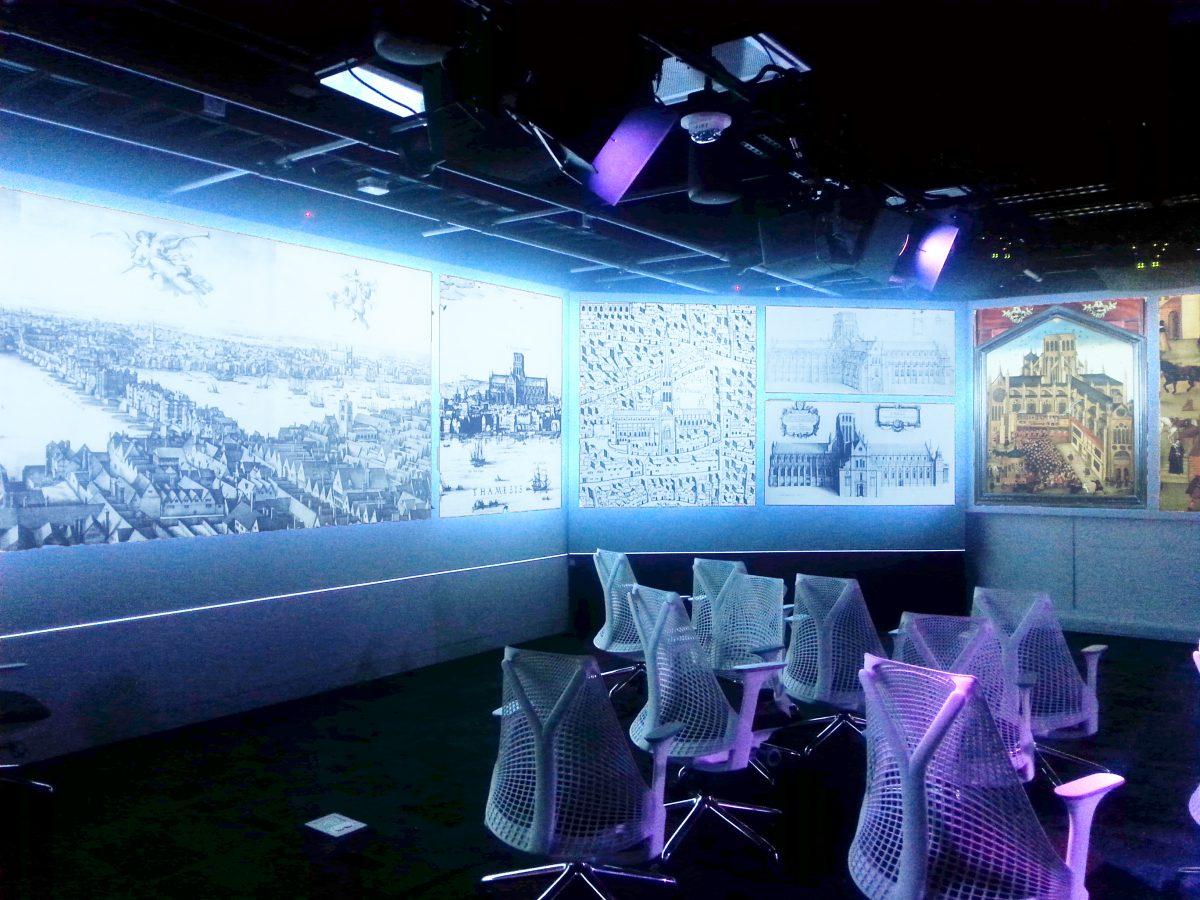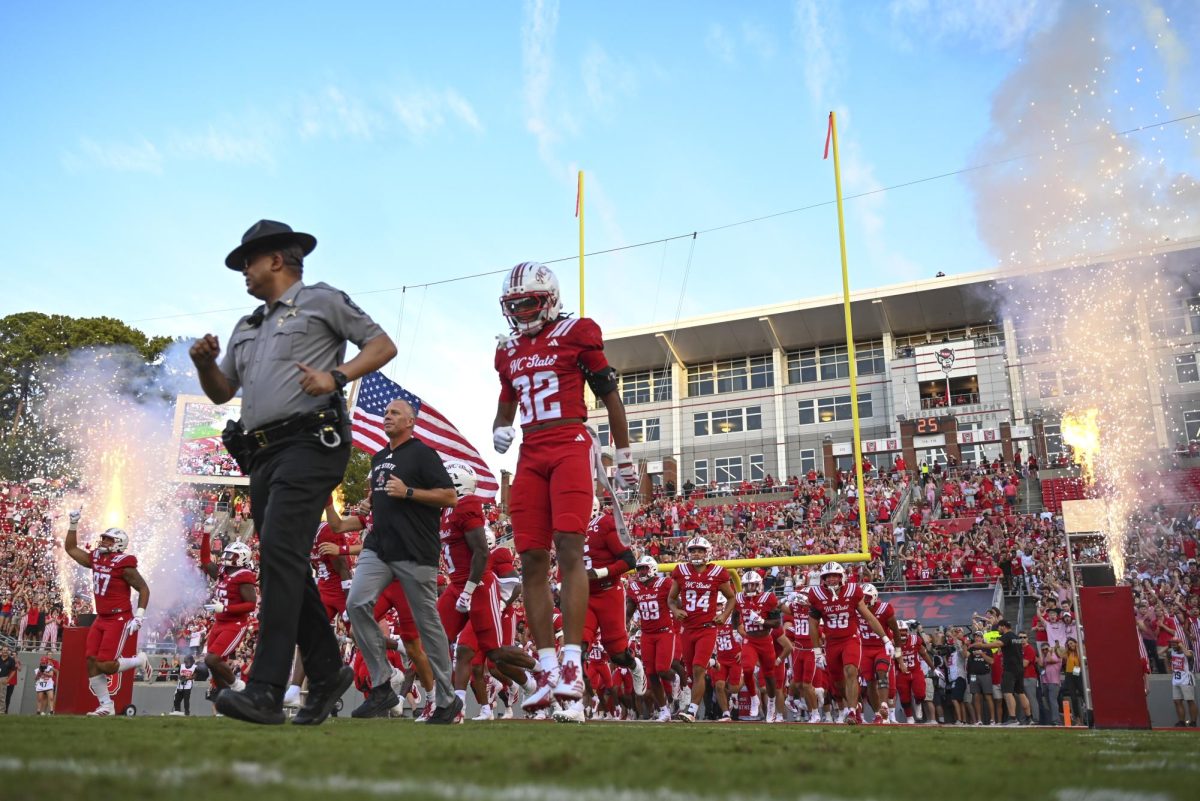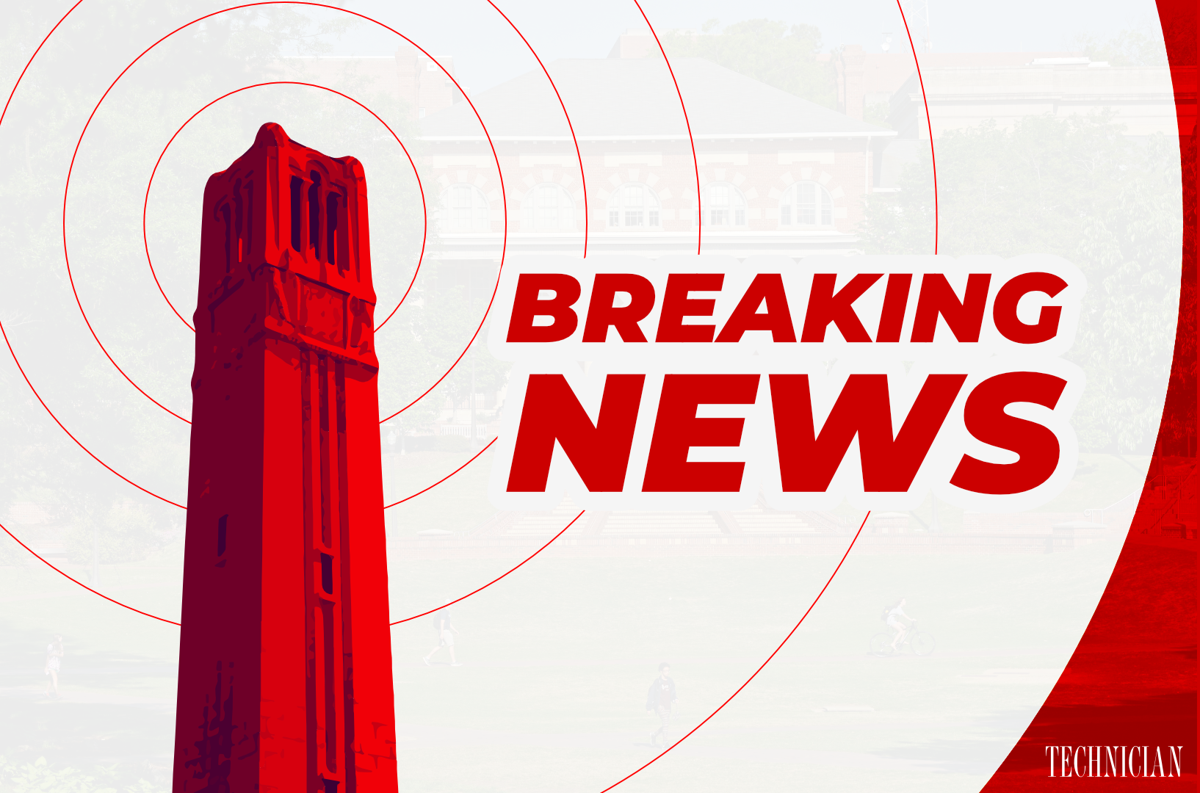An interactive re-creation project in The Hunt Library depicts a full visual and audio model of a famous 17th century sermon given by John Donne, a prominent cleric of the Church of England.
According to the project’s website, the presentation features an architecturally detailed and historically accurate digital model of the courtyard of St. Paul’s Cross—where the speech was originally given as a memorial to a failed attempt to blow up parliament and assassinate the monarchies of the time.
Spearheaded by John Wall, a professor of English, and David Hill, an associate professor of architecture, the Virtual Paul’s Cross Project started as an idea for a simple online representation of the sermon, but quickly escalated to a detailed sensory experience with the addition of Hunt Library’s teaching and visualization lab
The Head of NCSU Libraries Information Technology, Maurice York, said he helped integrate the lab’s technology.
The projectors produce images that are 16 times the quality of normal high definition televisions. The projections wrap around almost the entirety of the lab.
The room also features 21 surround sound speakers. York said the speakers have some of the most advanced audio capabilities in the country, and the team was able to completely transform an ordinary space into a realistic representation of a crowded courtyard in 17th century London.
“The genesis of the idea was from John Wall,” Hill said. “He’s a John Donne scholar, so he’s interested in understanding at least one of his sermons in a different way. To actually hear the sermon, and to hear the sermon in the place it was meant to be spoken.”
To reconstruct the cathedral and the surrounding courtyard, the researchers used evidence from an archeological dig of St. Paul’s Cross, which provided the dimensions of the floor plan, but none of the verticality and architectural detail common in gothic cathedrals.
“What we relied on there were several bits and pieces of drawings, paintings and engravings from the time period, but nothing was entirely definitive,” Hill said. “There are parts of the model that we had to use our best educated judgment.”
According to Hill, the sermon itself required the research of a linguistics expert to translate it into the common dialect of the time. Once recorded, the speech was then put into the acoustic model that was able to manipulate it in order to mimic how John Donne’s voice would have echoed throughout the courtyard.
“Every one of those components from all of these different fields of architecture, linguistics, literature and history made the realism [of the project] what it is,” York said.
Layered on top of the visual, an acoustic model was used to calculate the exact sound quality one would hear while standing at any position in the courtyard.
The model took into account all of the reflective sound qualities of the surfaces used to construct the courtyard at the time, and it was then able to provide an audio of how the sermon would have sounded at any position relative to the speaker.
“What we have in the courtyard, all the different surfaces: stone, glass, the ground itself, the people and to some extent the atmospheric qualities of the space,” Hill said. “All of these things can go into calculating sound and how it travels in the space.”
The switchboard that controls the operation has several interfaces that allow the adjustment to the audio. It includes a realistic range of noises produced from a crowd of what would have ranged from 500 to 2,500 people.
The researchers also added common noise pollutions of the time, such as dogs barking, birds squawking and horses walking through the square in an effort to create a depiction so realistic that participants feel as if they are transported to a time long forgotten.
“I think it’s a real sign of how research on campus is becoming multidisciplinary,” Hill said. “How that’s becoming a critical way for us to operate, across departmental or college boundaries.”





